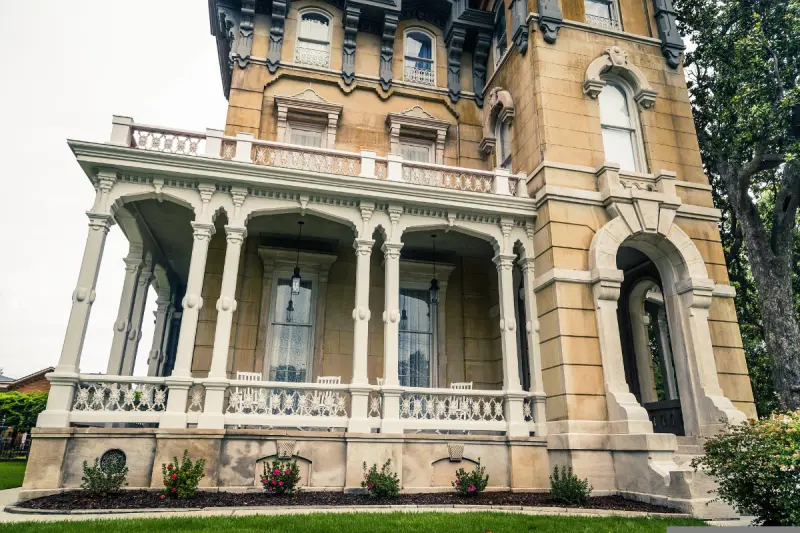What alterations can be made to a listed building without planning permission?
Here in the UK, we have roughly 500,000 listed buildings according to Historic England, many of which are privately owned as homes, rental properties or commercial properties. But, just because you own a listed building doesn't mean you can alter it in whatever way you wish. Being listed means the building is of special architectural or historic interest. Its aesthetic or historic importance can't be compromised through any works or projects you want to carry out.
However, despite their special interest status, there are ways to extend or alter listed buildings or even demolish them in certain circumstances. To extend or alter a listed building, you must apply for appropriate Listed Building Consent from your local planning authority. Applying for this consent through the planning system means the relevant authorities will balance the changes you want to make with the historic or architectural interest of the building. If you want to demolish a listed building, for whatever reason, you need to have government planning guidance that approves your plans.

Both of these processes will take the building's historic and architectural interest into account. They will consider other factors, such as the building's current condition, viability as a useable property and function. Most of the listed buildings accredited by Historic England in the UK are Grade II Listed, which is less restrictive than Grade I Listed Buildings. Therefore, most listed buildings can be maintained with like-for-like materials that uphold their architectural or historic interest. However, regardless of what changes you want to make, you should always proceed with caution.
For example, you may be able to change the fittings in the bathroom of a listed building, so long as you replace them with similar fittings that match the Victorian aesthetic if it is a Victorian property. Alternatively, you may be able to freshen up the walls with a fresh coat of paint, providing you don't compromise any underlying historic layers of decoration. It all depends on the property's features that secured its listed status. You may even find the property's garden is listed, preventing you from altering it significantly.
When will you need formal or written consent?
If you own a Grade II or Grade I listed building, it's always helpful to know what permissions and building consent you need to make alterations, extensions or other changes. Regardless of the work you want to do, it's always best to check with your local planning authority first to ensure you aren't breaching any laws or building regulations.
Here are some of the most common changes people make to their listed buildings and the formal or written consent required to do them.
Repairs
Suppose you want to make repairs to your listed property that will affect its historic or architectural character. In that case, you must apply for written Listed Building Consent before you carry out any work. You could possibly have the structure fixed without consent if you are using like-for-like materials. Still, it is always best to consult your local planning authority for professional advice beforehand to ensure you are allowed to make repairs in such a way as to preserve the building's special interest.
Internal alterations
The listed status of listed buildings covers the entire property, inside and out. Therefore, if you want to make any interior alterations, such as changing the interior layout, removing walls, installing new double glazing, exposing original brickwork or removing or changing any internal features, you must apply for written Listed Building Consent beforehand.
Renovations and extensions
It's only natural for homeowners to want to add a little of their own aesthetic tastes to the properties they own. However, suppose you own a Grade I or Grade II listed building. In that case, you will need to apply for Planning Permission and Listed Building Consent with the relevant planning authority officers before adding any extensions to the property. If you have a multi-part project in mind, each alteration or extension you want to create must have its own written consent before any work is carried out.
Windows
Windows form a large part of a building's character. If you plan on replacing or removing historic glass panes, timber frames, or other window detailing, changes such as these are subject to listed building regulations. Even if one of your windows is broken, replacing or repairing it could significantly alter the property's aesthetics. Therefore, before you make any alterations or repairs to a listed building's windows, you must secure written consent first.
What is unauthorised work?
Once a building has been listed, changing the internal or external appearance or structural nature of said building without listed building consent or planning permission is classed as unauthorised works. Some homeowners may be unaware that even small alterations or repairs require listed building consent. Therefore, if you are unsure whether the changes you want to make to your listed property require permission, it's always best to check with your local planning authority, regardless of how minor or major your proposed changes might be. Otherwise, you risk being issued a listed building enforcement notice, forcing you to revert any work carried out on the property.
Protecting and maintaining the UK's Listed Buildings
Like any other property or structure of significant architectural or historic interest, listed buildings require regular maintenance. This maintenance ensures that the condition of the building is preserved and that any damage can be repaired as quickly as possible. However, the historic buildings that find themselves as listed properties require greater care than others. Here are some of the most common maintenance works and issues with them when working on listed buildings.
Keeping with the original design
Whenever a listed building becomes damaged or requires repairs, whether Grade II or Grade I listed, maintenance teams are required to preserve the original design of the building throughout their work. For example, if a property was built during the 17th century, the maintenance team must use the materials and building techniques available at the time to carry out their work. They must also pay close attention to the exterior appearance of the building and ensure its aesthetic qualities are maintained.
Bespoke materials and traditional building methods
If there is any significant structural damage to a listed building, the maintenance and repair team must salvage as many reusable original materials as possible. Reclaiming this material will help maintain the listed building's historic and architectural interest. For the materials they cannot reclaim, they must find appropriate replacements. For example, they may attempt to source slate or roofing materials from the same place where the original material came from. If this is not possible, they must find materials that are both physically and aesthetically identical to the originals from other sources. Alongside sourcing appropriate materials, the maintenance and repair team must also use traditional methods wherever possible. This means using building methods from the era when the property was originally built, whether this is the 1500s, 1600s, 1700s, etc.
Collaborating with conservation experts
Again, no matter the scale of the alterations or repairs you want to make to your listed building, you'll need written Listed Building Consent to do it. Working with conservation experts is also integral to changing a listed property. These professionals can help you preserve the building's integrity and heritage throughout your projects. preserve the
What's the penalty for listed building renovations without consent?
Suppose you undertake any work on a listed building without obtaining consent first. In that case, the maximum penalty you could face is potentially an unlimited fine and two years imprisonment if you are convicted in Crown Court. When determining an appropriate fine, the judge must work out what financial gain the building owner stands to make from their work and deny it to them through the fine.

Intentionally damaging a listed building is just as much of a criminal offence as damaging other modern buildings in the UK, with one exception. Where in other cases, the building's owner can do what they like with their property, including damaging it; this isn't the case with listed buildings. If you allow someone to damage a listed property or intentionally damage it yourself as the owner, you can face criminal prosecution under the Criminal Damage Act 1971.
But, depending on the nature of the project you have in mind, it can sometimes be difficult to know who is liable for any intentional damage to a listed building. Essentially, the person who carried out the work and those instructing them to carry it out are the ones that committed the offence. This means not only are the builders or repair workers liable for prosecution, but anyone instructing them, including the building's owner, is also liable.
You also cannot claim ignorance if you are found guilty of causing damage. Not knowing that the building is listed is not a sound defence and will not help you in court. Where this usually gets people into deep water is where they cause damage to a curtilage building or other attached structures to the main property that they didn't know was included in the listing. If you are unsure about your building's listed status, always check with your local planning authority and the National Heritage List for England (NHLE).
When is listed building consent required?
When you want to demolish, alter or add an extension to a listed building, you will need to apply for Listed Building Consent. You can carry out some work without this consent, but it is always best to check with your local council or local conservation officer first. This consent is required so your plans can be checked to ensure you won't alter the building's historic or architectural special interest. You cannot apply for retrospective listed building consent after you've finished any work. You must apply for it beforehand.
Are you looking for an commercial architects in Sussex, Kent, Surrey and London? For architect services in West Sussex and the surrounding areas, follow the links below.

